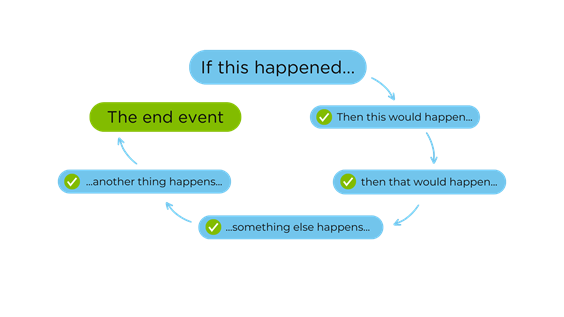
3 Practical ideas/strategies for learning and revision
‘Chunking’
Ever find studying a bit overwhelming?
Try the ‘Chunking’ method!
‘Chunking’ is where you break down one big topic into smaller, more manageable ones.
Instead of a marathon study session, break it up. For example, in an hour, start with a quick 10-minute warm-up by looking over your notes, then dive into two 15-minute activities - maybe be a flash card activity or quiz. Then finish up with a snappy 10-minute wrap-up - mark your quiz and see where you need to improve and where you’ve done well. It keeps things interesting and helps you retain important information.
The important thing is to customise your revision sessions to suit the way you learn, and remember to take plenty of short breaks throughout.
Narrative Learning
Using storytelling as a tool can be helpful when it comes to revision. Transforming information into a narrative, or story, provides it with a structure and a natural time order. This can make the details easier to remember.
You could try:
- Comic Strip Summaries: Create comic strips to summarise key concepts or events. Each frame of the comic can represent a specific point or idea. Use speech bubbles and visuals to narrate the information in an engaging way. Everyone has their own preference for how they absorb information, and comics cater to both visual and textual learning styles. Give it a go!
- Causation Chains: A causation chain sounds complicated, but it’s just a kind of mind map showing the causes and effects that link different events or concepts in sequence. Making a chain can help you to understand the relationships between different elements and help the information stick in your mind like a story.

- Story-based Flashcards: Instead of traditional flashcards, try creating story-based flashcards. Each flashcard can contain a question or concept on one side and a short narrative or story related to that concept on the other side. Associating information with a story can help with memory during revision. Customise your own flashcards using our template here.
Use the Mark Scheme
Past papers and mark schemes can be really useful, especially when you use them together. Visit your subject’s webpage on the WJEC website or ask your teacher to provide you with some past papers and their marking schemes.
After you’ve learnt a topic, reinforce your learning by testing yourself with past paper questions, using the mark scheme as a guide on what to include. It is important to work on both your knowledge of the subject and your exam technique, and this is a good way to bridge the two.
If you are still unsure whether your answer meets the criteria of the mark scheme, ask your teacher to go through it with you to perfect your exam technique. Studying at home? Check out your ‘Exam Walkthrough’ on our digital resources website. Using questions from past exam papers, these resources include audio help and audio script in the notes to walk you through a mock examination paper, helping you revise and practise useful exam techniques. You can complete the “mock” in a single sitting, tackle one or two questions at a time or revisit some parts of the presentation to reinforce your learning.